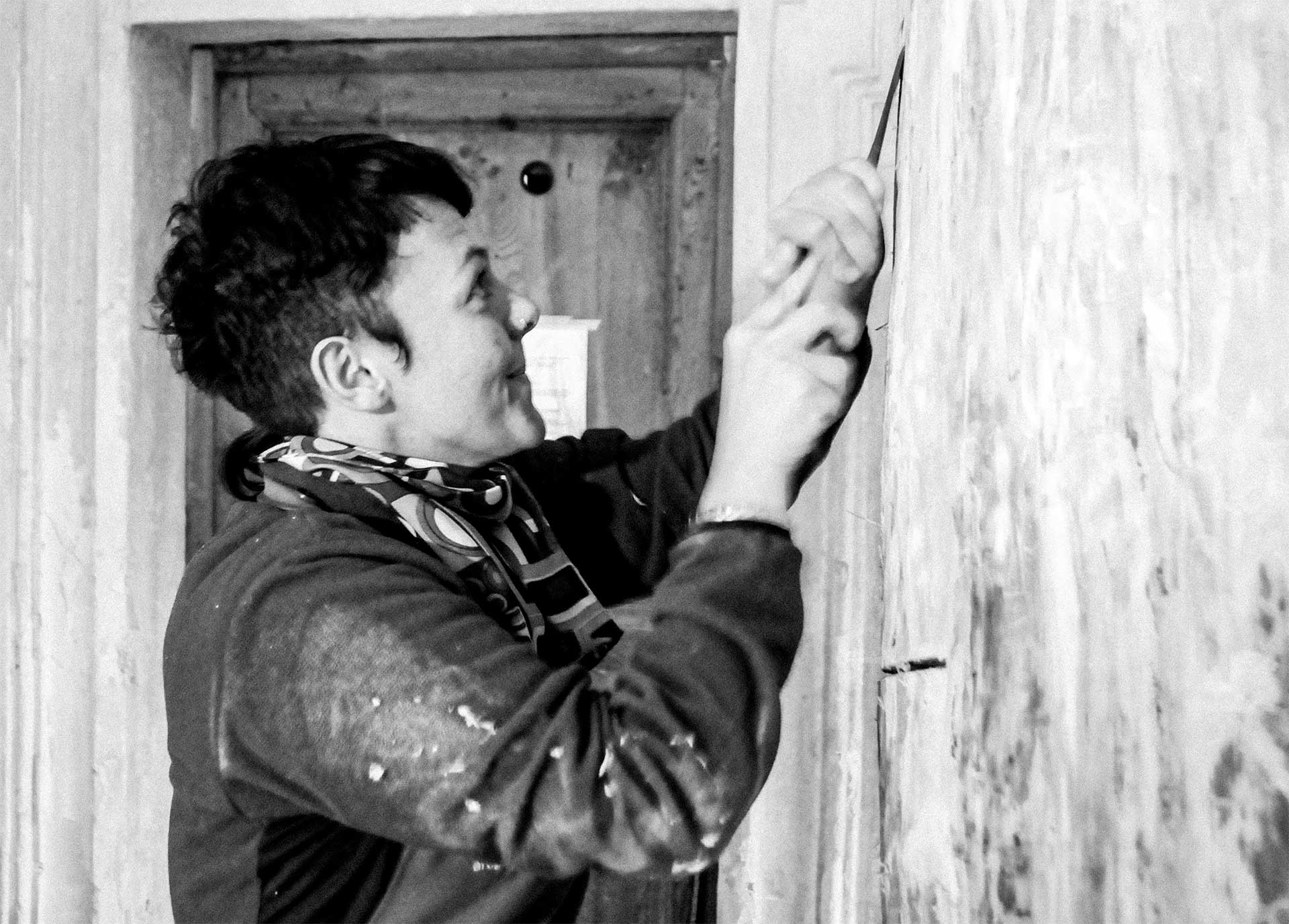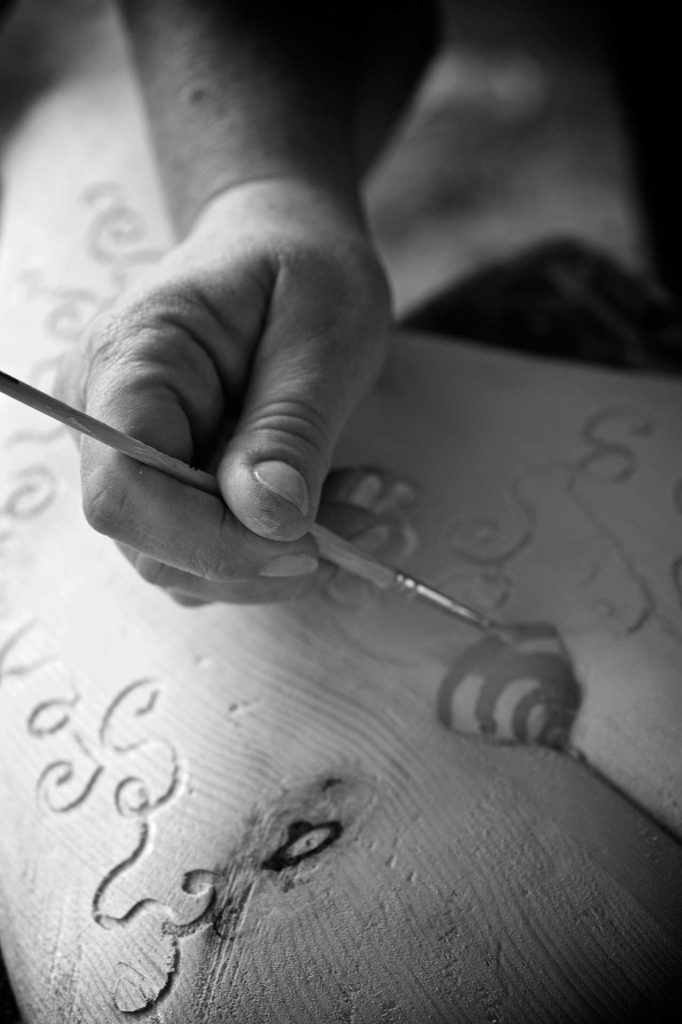
What is most striking in Sara Andrich’s artistic production – evident just by flicking through her Catalogue of selected works – is her ability to pass with surprising ease, from one technique to another and from one style to another. All this to produce the inevitable, but at the same intentional collision that gives birth to the complex forms of her artistic universe.
Having the opportunity to enter the creative spaces of an artist, both physical and mental, is a privilege that is not easily forgotten. My meeting with Sara and her art has stimulated many reflections, even after some time, on the richness of her inspiration that surfaced during the course of our conversation. The vastness of Sara’s knowledge of visual art is immediately apparent, and no less is the extent of her aesthetic sensibility. Suggestions and echoes of ancestral memory, distant in space and time, return frequently – especially in her sculptures – to denote once more how Art, for Sara Andrich, cannot be confined within any boundaries, nor labelled as a reductive and all-encompassing formula.
Through her sculptures, the Artist thus gives life to sophisticated representations which evoke, with rare effectiveness, poetic and never banal reflections on the multiple themes of our existence. All this, along with the lightness and fluidity of an unmistakable graphic symbol, which in its intertwining like an oriental arabesque, knows neither beginning nor end. So what exactly is the correct definition for Sara’s creations? Painted Sculptures? Plastic Art? I think both are inappropriate, considering the semantic complexity of her works and the evocative richness in colour, sometimes used with the same elegance as a medieval enamel or a sparkling glass mosaic. One thing is certain: colours and shapes, intertwined in indissoluble knots, are the two opposite poles within which her unmistakable art operates. Sara hides in the most secret folds, personal meditations on ancient and contemporary art, through to decorative and applied arts which are substantiated in the use of different materials: ceramic, plaster, wood, metal, polyurethane, even light itself…
Hers is a perfect game of skilful balances, where one element never prevails over the others or detaches from them, thus making the outcome of her creations, harmonious. The Catalogue offers a selection of works, focusing on three and undoubtedly the most notable main themes. These are series, or rather “cycles” as Sara calls them, centred on the female universe, roosters and cactus plants. Subjects apparently unrelated, but which instead refer to a reflective synthesis on some of the most primitive figurative themes, which in the different cultures of the world have become bearers over the centuries of a load of symbolic values that are still extremely current today. It is undoubtedly the beauty of the female form, represented in all its infinite nuances and silhouettes, to hold primacy here. It is a beauty that is not a mere wrapping, but essence itself, a starting point for a daily meditation on the complex role of women in today’s society, observed with disenchantment thanks to the kaleidoscopic multiplication of meanings.
No less suggestive and interesting are the rooster and cacti creations. The former is a symbolic expression, both simple and effective, of the transition from darkness to light, from the dreamlike dimension and often harbinger of nightmares and anguish, to that of the more reassuring wakefulness, cognitive and rational state. Figures that thus unite two apparently irreconcilable worlds, and which, thanks to the sophisticated choice of metal inserts, allude to the process aimed at capturing within themselves that light which they first catalyse, to hold it and then return it during the day with every reflection of a light source. Poetic, in their simple profile, even the cacti, which are satisfied with little in inhospitable deserts – uncontaminated by man – where they idly grow, to remind us with extraordinary effectiveness of the sovereign role of Nature who lives by its own laws and does not accept conditioning. These are themes that put a strain on an artist’s ability to always find new inspiration and stimuli for reflection, forcing one to rethink not only the changing times, but also the metamorphosis of one’s own art. It is an art that applies to Sara, which can be defined as true as it is effective: because the sensitivity which leads her to her goal is equally true.
The Catalogue does not constitute a simple landing place, a safe haven for some of her most beautiful works, but should, if anything, be hailed as the starting point for new journeys, turning our gaze towards unexplored and fascinating horizons. In this spirit, I applaud this publication, that it will bring good fortune to Sara Andrich.
Gianluca Tormen
Art Historian

Bio
Sara Andrich was born in Agordo among the majestic Dolomites of Northern Italy on the 30th of July 1974. Daughter of a long line of sculptors, poets and composers dating as far back as 1600, artistic expression has always been her world. From early childhood, Sara reveals a natural sensitivity and aptitude for drawing and creating art. After several work experiences, the artist decides to follow her calling and graduates from the Venice Academy of Fine Arts, majoring in sculpture. Sara’s artistic career continues to unfold, engaging in sculpture, painting and drawing. From 2010 her sculptures feature in major art exhibitions and events, receiving a series of awards, both local and international. A personal expression of the vicissitudes of everyday life, Sara’s Art is a continuous meandering between shape, colour, materials, curiosity and concept. A perfect game of skilful balances, where one element never prevails over the others, in the search for self-expression and harmony.
© Foto Diego Landi